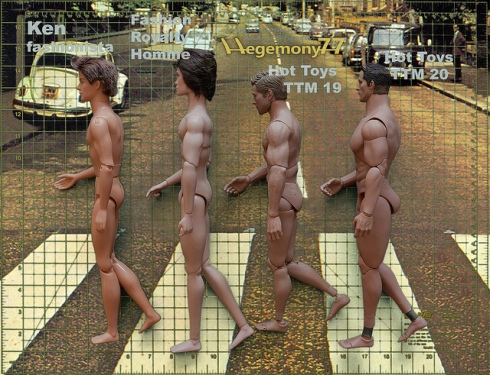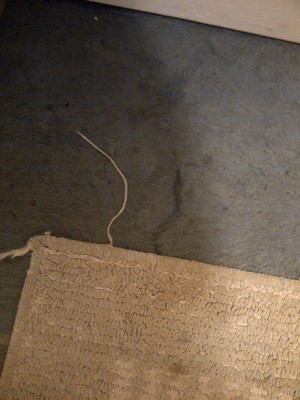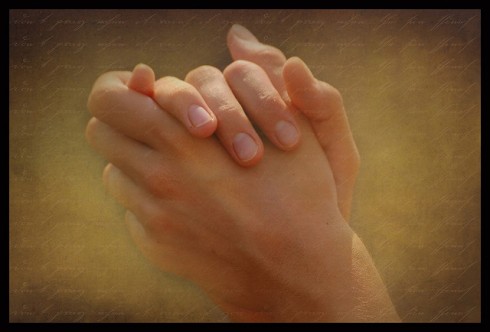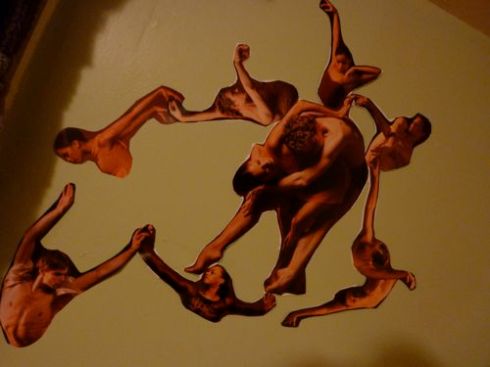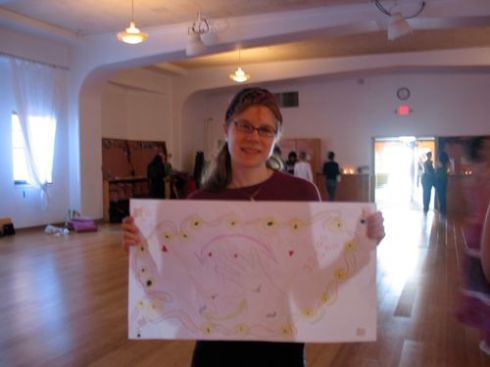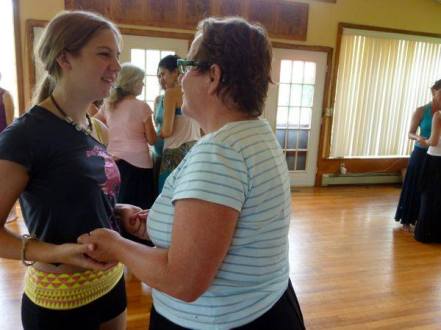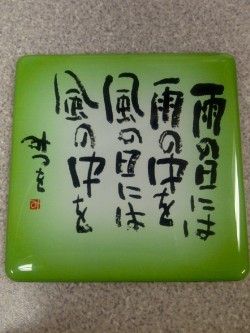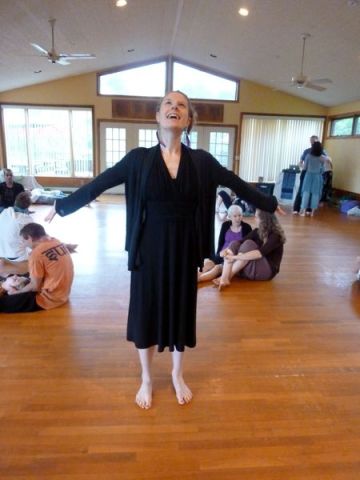(This post is a continuation of my quest to reclaim my body through Rolfing®. Click here for the post detailing my previous session of this bodywork technique.)
The two weeks following Session 4 have been … bipolar. The moments during and immediately following the session were some of my most powerful ever, but then for a good week I felt like I had regressed nearly all the way back to baseline in terms of how my body was behaving.
Then, like magic, a few days later, I’m feeling my body in a brand new, wonderful way.
Laurie “warned” me that many people viewed the fourth session of Rolfing as a ho-hum prelude to the more enticing Session 5, which centers on the heavy-duty psoas structure.
Session 4—the first of Rolfing’s “Core” sessions (sessions 4 through 7 in the Ten Series)—focuses on the inside arch of the foot and up the leg to the bottom of the pelvis.
She told me to picture the importance of this session like a fountain, the way the water shoots up through the center in a solid stream and then cascades down. We need to pull our resources up from the bottom—through the feet, legs, and pelvis—before it’s possible to shower ourselves fully in the energy that surrounds us.
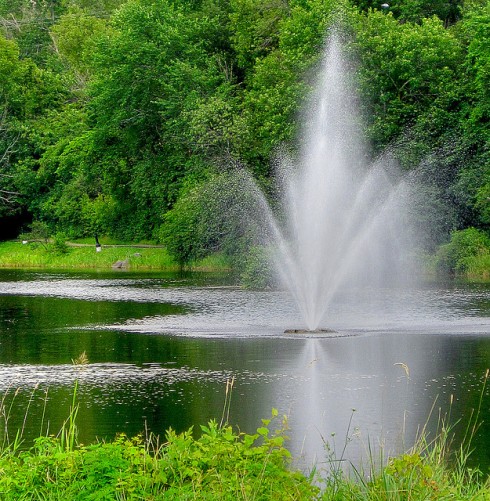
Pulling up, cascading down. (Source)
Well, for what is considered a rather “eh” session in other clients’ opinions ended up being a hotbed of sensation and emotional release for me.
When I went to lie down on the table, I was a buzzing bundle of stress. I had just started a new, demanding job that week and carried my tension with me. I was so heavy with angst and exhaustion and mental commotion that I feared absolutely nothing would affect me during the session, that Laurie’s intentions would do nothing for me.
That said, I hardly remember exactly what the session entailed, anatomically. Instead of trying to keep track of what she was doing and how she was moving my body, I just gave myself to Laurie. I gave my brain permission to shut off and surrendered to her touch.
I do remember at one point, with my knee bent and pulled into my chest, as Laurie’s hands kneaded my hamstrings all the way up to my buttocks and groin, I thought, “Oh, now this is Rolfing.” Translation: Oh crap, this is physically intense.
I wasn’t complaining, though. I have a high tolerance for deep tissue work, and I always find it a shame that it’s so hard to find a massage therapist who is willing to navigate that very important (yet “private”) area. Yes, it’s very intimate and the client has to have some degree of vulnerability to allow a stranger to dig deep just inches away from your perineum, but that is where some of our most buried wounds and emotions are stored.
For me, it’s been a very guarded area due to the labral tear in my hip and the impingements in both of my femurs. It’s my “problem area.” But with Laurie, I completely trusted her and knew that she wasn’t causing pain; rather, it was release.
As the session continued, I realized I was experiencing color visualizations. This is a fairly common occurrence for me when I am meditating or deep in yoga—what I think are just random objects begin to pass through my mind, but then I realize there is a pattern—they are all the same color.
This time, the objects were all deep red hues—a human heart, pools of blood, roasted red peppers. Perhaps a nod toward the root chakra, located at the base of the spine near the coccyx?
When I flipped onto my back for the end of the session, something shifted. One of the closing movements of every session is for me to do a small bridge pose—pressing my feet into the table, lifting my pelvis, and then sinking back down into Laurie’s hand, which rests under my sacrum.
This time, however, everything felt completely different.
The bottoms of my feet were just soaking up heat, pulling up from my soles energy that collected in my knees and then poured from the knees down my thighs, pooling into my pelvis.
My legs didn’t feel like liquid—no. My legs felt like vessels to a larger drainage system, containers for a very elaborate energetic sump pump that was squeezing in warm and fluid energy from below my feet and expelling it into my pelvic bowl.
It was turning into a non-human experience. It was neither pleasure nor pain. It didn’t itch or burn or ache. It was just … warmth. A bit of a heavy tingling sensation, but not “my-legs-are-falling-asleep” tingling.
Your know the emotional feelings you get when you hear a heartwarming story about a random act of kindness or see a video of an animal rescuing its owner? Imagine hearing or seeing hundreds of those stories all at once but then translating those emotions into physical sensations.
That’s kind of what was coursing through my feet, legs, and pelvis. I didn’t know what to do with all those feelings! In that case, what happens is that I get very warm, begin sweating, breathing quickly, and tears start escaping from my eyes.
The sump pump, in working order, does its job to make sure the soil has what it needs and then disperses the rest. Whoosh.
I slipped into a bit of a primordial state at the very end. Behind my closed eyelids, everything felt like it got much lighter, as though someone had pulled open the window blinds in the room.
My body felt like it was losing shape, that instead of a long-limbed, 5’6″ woman, I was nothing but a collection of rounded flesh, shapeless. In my mind’s eye, I no longer had hair—my head was bald, a fetus—a feeling as though I were in utero but not at all feeling suffocated or claustrophobic.
A pleasant, light-filled container. That’s where I rested for the final moments of my session.
When I stood up to get dressed, my knees felt huge, as though the ball-and-socket joints had been replaced by those inflated plastic bags that have taken the place of styrofoam packing peanuts for protecting packages.
I also felt incredibly buoyant when I stood upright, as though balloons were resting under and next to every limb. I imagined that I looked a bit like Ralphie’s brother in A Christmas Story, when he’s wearing that massive marshmallow-like snow suit: “I can’t put my arms down!”
The morning after the session, as I put on my underpants after my shower, something occurred to me: I had just slipped into my undergarments using my non-dominant leg first. I always always always put on pants in a right-left fashion.
But now, left-right?! I paused, bewildered, realizing that I did something that felt different, “off,” and new.
… And that was where the magic ended for about a week, as suddenly all of my old aches and body nuisances returned, from my aching lower back to my wonky scapula.
Walking felt crooked again, and I did not like the way my body felt during a 5Rhythms class. I was very frustrated and feared that doing Rolfing during such intense life events (divorce, new job, moving) was counterproductive.
But a week and a half after the session, something changed. My body aches began to soften, and one of the biggest noticeable differences was the way my body felt during moments of sexual passion.
Sustained. Elongated. Full-bodied.
The fountain metaphor now totally made sense, with every orgasm feeling like a loop of energy being drawn up through my center and then cascading down, a continuous dance of rising and falling.
An act that has always been about feeling had suddenly intensified to a new level, this particular Rolfing session perhaps tapping the entryway to the core of something exhilarating.
Now who said Session 4 wasn’t interesting?!

